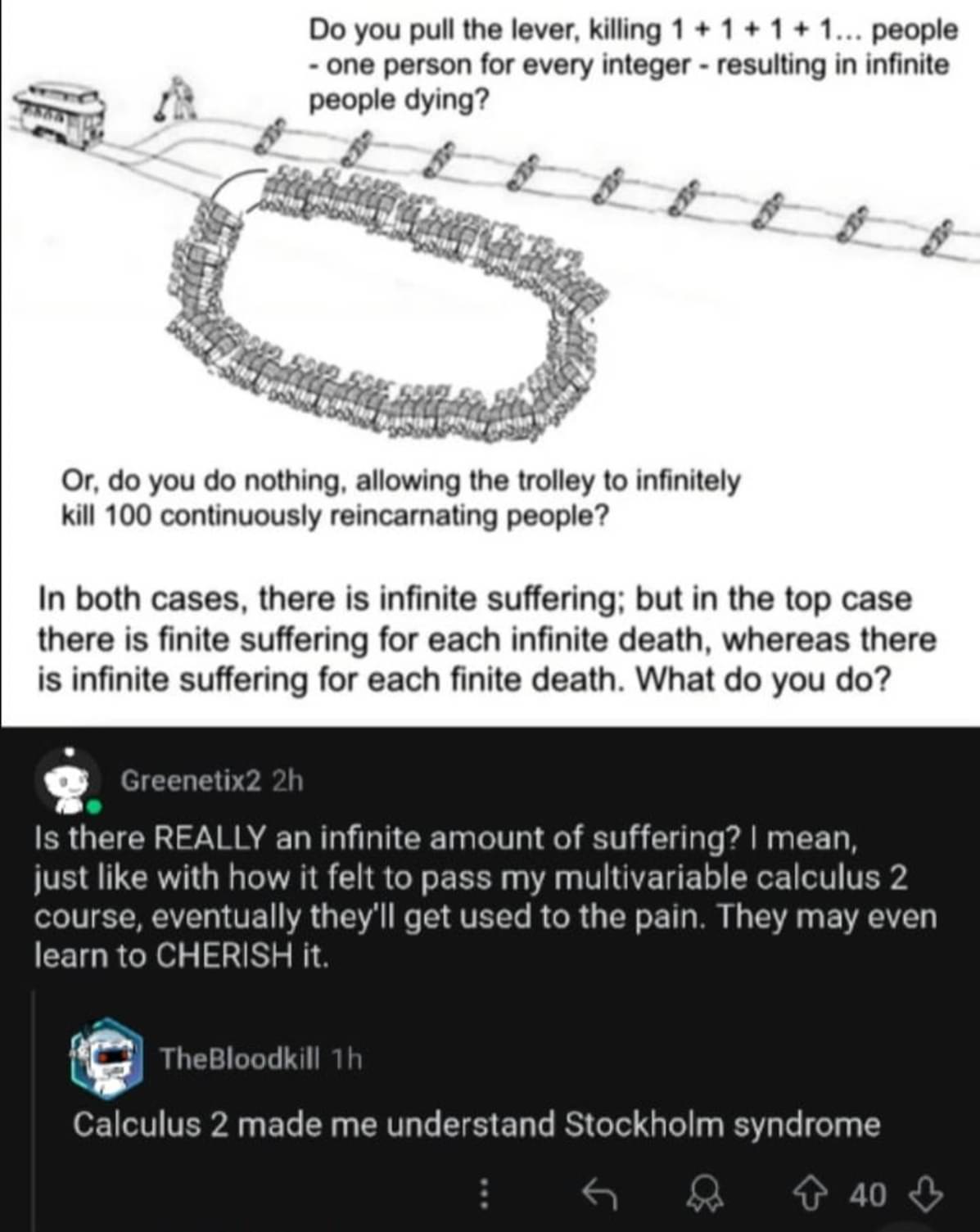this post was submitted on 16 Oct 2024
629 points (97.7% liked)
Science Memes
11086 readers
1175 users here now
Welcome to c/science_memes @ Mander.xyz!
A place for majestic STEMLORD peacocking, as well as memes about the realities of working in a lab.

Rules
- Don't throw mud. Behave like an intellectual and remember the human.
- Keep it rooted (on topic).
- No spam.
- Infographics welcome, get schooled.
This is a science community. We use the Dawkins definition of meme.
Research Committee
Other Mander Communities
Science and Research
Biology and Life Sciences
- [email protected]
- [email protected]
- [email protected]
- [email protected]
- [email protected]
- [email protected]
- [email protected]
- [email protected]
- [email protected]
- [email protected]
- [email protected]
- [email protected]
- [email protected]
- [email protected]
- [email protected]
- [email protected]
- [email protected]
- [email protected]
- [email protected]
- [email protected]
- [email protected]
- [email protected]
- [email protected]
- [email protected]
- !reptiles and [email protected]
Physical Sciences
- [email protected]
- [email protected]
- [email protected]
- [email protected]
- [email protected]
- [email protected]
- [email protected]
- [email protected]
- [email protected]
Humanities and Social Sciences
Practical and Applied Sciences
- !exercise-and [email protected]
- [email protected]
- !self [email protected]
- [email protected]
- [email protected]
- [email protected]
Memes
Miscellaneous
founded 2 years ago
MODERATORS
you are viewing a single comment's thread
view the rest of the comments
view the rest of the comments

I go for option 1.
In all programming languages that I know, integers have a maximum number. E.g., in C that'd be 2,147,483,647. After that, you would run into an overflow, resulting in either...
So compared to option 2, we have a chance of stopping the death count. And even if the train keeps running, we have essentially option 2 but the same people only die very rarely. If we assume a cycle of 1 death per second and an integer boundary of 2,147,483,647, that's just one death every 68 years per person involved. Seems more fair to me compared to 100 people constantly dying over and over again.
So the Zapp Brannigan approach?